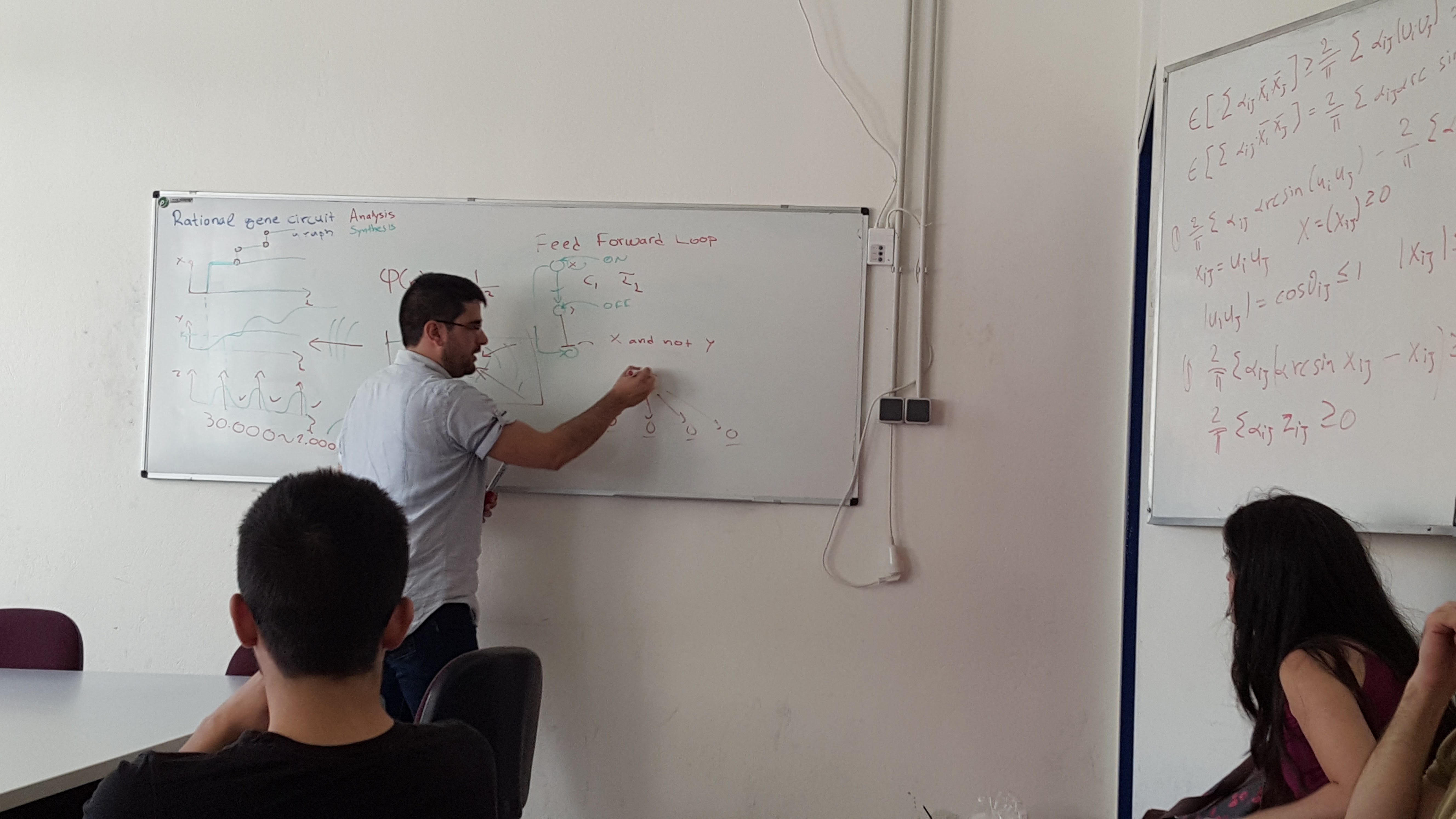Pitch at the ETH Student Project House
ETH Zurich is establishing a student project house that allows students from various backgrounds to follow own ideas and projects. They organize pitching events where students can present their ideas and connect to other students with similar interests. Due to the generally high demand of time and resources, life science projects have not yet been in the focus there. We aimed to help to change that. To do so, we went there to present one of our earlier ideas that would have been more engineering oriented. That way we introduced mechanical engineers, computer scientists and other students from ETH Zurich to synthetic biology. Following, we passed on our own experiences with a student-led life scientific project to the SPH-manager.Talk at NTU Athens

Nikolaos giving a talk at NTUA
Thus, Nikolas, set out to present some pieces of our project to the graduate students of Computer Science and Electrical Engineering of the National Technical University of Athens, where Nikolas obtained his EE diploma. The talk had three parts: First, he introduced the basic notions needed to describe gene regulation (central dogma of molecular biology, genes, promoters, repressors, et.c.). Second, he briefly presented Uri Alon's work [1] and explained how certain gene circuits have been proven successful in processing signals of the cell environment, filtering noise and enabling appropriate responses.
Finally, he outlined how we took advantage of these high-level construct in our project, e.g. by engineering an AND-gate to increase the specificity of our strain, and by emplying a heat-deactivated repressor to control the expression of our cell lysis system.
References
- Alon, Uri. An Introduction to Systems Biology: Design Principles of Biological Circuits. CRC Press: 2006


